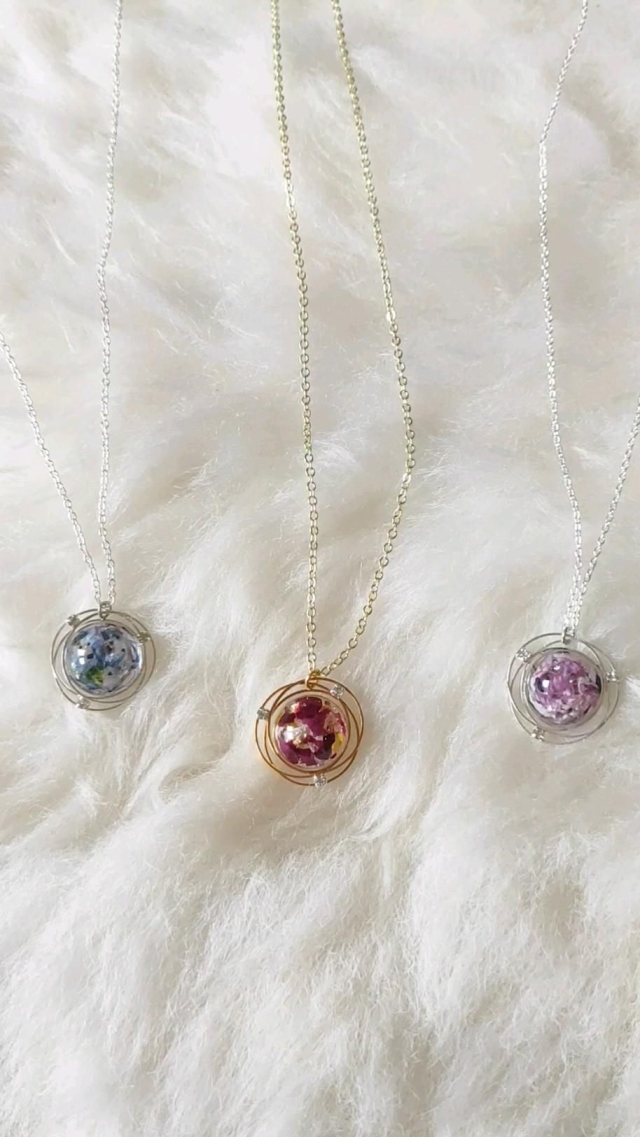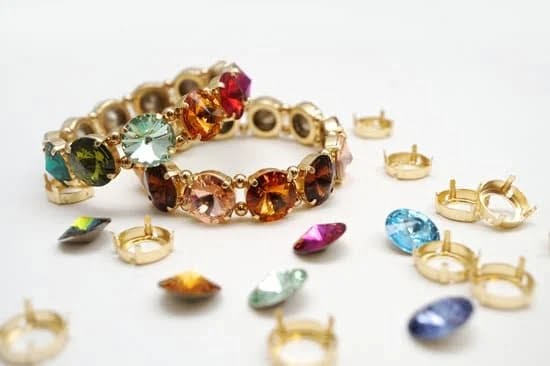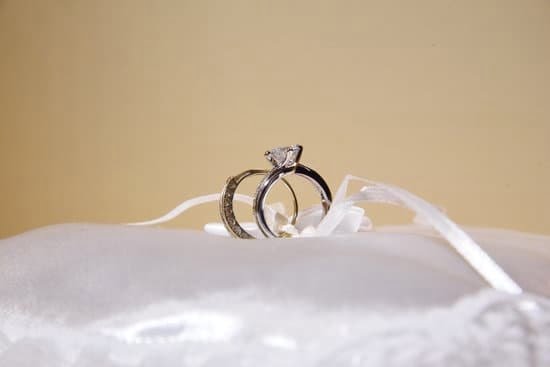Jewelry molding is an art form that has been around for centuries, with a variety of materials being used to create intricate designs. In modern times, materials such as silicone, wax, and rubber are the most commonly used materials for jewelry molds. Depending on the desired shape and design, each material provides unique benefits and drawbacks. Knowing which material is appropriate for a particular project can make all the difference in terms of quality and cost efficiency.
Silicone – Silicone is one of the most popular materials used to make jewelry molds because it provides superior flexibility and mouldability. When considering using silicone to make jewelry molds, it’s important to invest in a quality product because lower grade products tend to be corrosive and degrade easily when exposed to extreme temperatures or other environmental changes.
However when using a high-grade silicone, jewelry makers can achieve detailed replication with precise detail. Additionally, silicone has a naturally smooth finish that can help reduce finishing time with no filing or sanding needed compared to other molding materials.
Wax – Wax is often used for prototype stages of a particular piece of jewelry since it requires minimal preparation time and allows for rapid prototyping. Waxes are stiffer than silicon so they provide greater structural accuracy than other materials.
They also have a slightly higher production threshold due to their strength and ability to hold complex shapes better than other moldable materials. Furthermore, wax is easier to melt down for reuse making it more cost effective in the long run than metals such as brass or steel.
Rubber – Rubber is another common material used among professional jewelers mainly due to its low cost and versatile nature. Although rubber offers little detail when forming these kinds of pieces as compared to wax or silicone, rubber’s low cost makes up for this lack of detail replication making it ideal use when speed isn’t crucial but accuracy isn’t either.
One downside is that depending on the grade utilized , certain types of rubber can become brittle over time , causing the mold’s details or edges crack or tear easily after multiple uses leading many jewelers reusing expensive molds out due lack durability.
Conclusion – Taking into consideration the tradeoff between life span versus cost , necessary project details needed , plus availability should be considered when choosing what material best suits your needs. The best way might just be utilizing more than one type of material during various stages based on production needs any given project entails yielding satisfactory results everytime.
Types of Materials used for Jewelry Molding
When it comes to jewelry molding, the materials used are essential for creating precise shapes accurately. There are various types of material available for jewelry molds. Among these materials, silicone rubber is often considered the most durable and reliable material used for making a jewelry mold.
Unlike traditional rubber molds, silicone rubber can easily be molded into any desired shape without compromising its durability. It is also resistant to damage from external sources such as too much heat or too much liquid, which makes it ideal for difficult jewelry projects. It also has a longer life span compared to other materials because it has a higher resistance to shrinking and cracking during the molding process.
Another popular material used in jewelry molding is two-part epoxy. This material provides strength and rigidity that make it well suited for creating intricate shapes and designs with ease.
Using two-part epoxy requires mixing the two components together first then allowing them to cure before use so that they form an solid layer when dried before starting any casting procedures.
Additionally, this material offers an extremely strong bond once cured, meaning that you won’t have to worry about pieces coming apart during assembly or wearing over time due to being exposed to tough working conditions such as high temperatures or frequent movement from wearables like earrings or necklaces.
The third type of material commonly used in jewelry molding is plaster of Paris or hydrocal. This is ideal when looking for maximum detail reproduction of delicate features and patterns as it will provide perfectly flush surfaces without needing any additional finishing work done later on after curing.
The special properties of this substance make it one of the most ideal choices when reproducing items with intricate details as every single minute detail will be replicated quite easily without losing any quality throughout the process.
In order to create effective final results using plaster molds however, they must be properly prepared prior to use by sanding down each layer with fine grit sandpaper followed by sealing them with a sealant paste in order ensure that no water penetrates through their interiors during storage once castings have been completed from within them beforehand.
The Best Material for Jewelry Molding Pros and Cons
Silicon is undoubtedly one of the most popular materials used for jewelry molding. This is because it is very durable and easy to work with. Furthermore, it provides excellent detail when creating intricate designs. Additionally, silicon molds are reusable so you can make multiple copies of your jewelry. One limitation of using silicon is that it doesn’t always give finer details like with wax molds, and the resulting pieces are not as strong as those made from metal molds.
Epoxy resin has recently become quite popular for making jewelry molds due to its resilient nature and sturdy build. It has been found that jewelry casted in epoxy resin yields a better finish than silicone or metal owing to its high level of surface hardness and glossiness.
Besides, if you want greater flexibility while designing intricate shapes, epoxy resin is the best choice to consider since it offers excellent thermal stability and creep resistance despite being economical. The main drawback with using epoxy resin is that it usually takes more time to construct a mold since these resins come in two parts which need proper time for mixing and curing before use.
Wax is another common material used for making custom jewelry pieces by pouring molten wax into specially designed molds which feature intricate grooves or cavities able to capture fine details on the final product. Moreover, this method gives craftspeople the ability to quickly create many similar pieces in a short amount of time at a relatively low price point.
One disadvantage that comes with using wax though is that once cooled down, waxy casts tend to be fragile so they require extra care when handling them during touch up works or coating processes such as plating applications where excess force can easily damage them due to their brittle nature.
What Are the Commonly Used Jewelry Molding Materials?
When you think of jewelry molding materials, metal often comes to mind, as metals like sterling silver and gold are some of the most popular options for making jewelry. But there are several other materials that are often used in jewelry molds too. These include plastic, resin, silicone and wax.
Plastic is one of the most widely used materials when it comes to forming jewelry molds. It’s widely accessible and easy to use, so no matter where you live in the world you should have access to plenty of plastic which is suitable for creating molds without breaking the bank.
The variety of plastics available can range from soft rubber-like material to more rigid variants, allowing many different levels of detail and strength for creating a custom-finished piece that stands out from the rest. That being said plastic isn’t ideal when you want a sturdy base from which to make your detailed pieces from.
Resin is a popular choice because it creates a hard surface with very fine details, making it perfect for intricate designs or details such as feathers or shells that need extra reinforcement. Resin is also quite tough when properly cured but does require a little more work due to its commonly stickier nature compared to plastic or wax molding materials.
Curing times also vary depending on the type of resin used but generally only last anywhere between 3 hours – 1 day max before becoming fully solidified/cured enough for usage throughout your design process.
Silicone molding is an increasingly popular option thanks to modern developments that have made using food grade silicone safer than ever before. This gives you much greater ability to produce intricate shapes and details with minimum effort during your creative jewelry design process from start to finish.
Silicones can offer amazing results and astonishing detail when properly pressed into shape by hand or by machine; boasting incredible flexibility but surprisingly strong yet lightweight end results that last for years on end; adding durability plus longevity not achievable through other forms of molding material alone.
What to Consider When Choosing a Moulding Material
When it comes to the best material to make a jewelry mold, it greatly depends on the project and its needs. Each type of material has advantages and disadvantages that you should consider before selecting the one that best suits your project.
If you are new to making jewelry molds, silicone rubber is likely the best material for starting out with as it is relatively affordable and easy to use. However, depending on your desired finished look, cost, available tools and techniques for shaping, other materials might provide better results.
One popular option is epoxy resin which provides great detail without needing specialized skills or equipment to form complex shapes. It also has good durability for pieces with intricate details such as rings or necklaces. However, epoxy resin does require more time and attention when mixing the two components together and ensuring the piece remains even during curing time since an uneven layer of resin can create weak spots that may break easily.
Waxes are also a great choice if you want maximum flexibility while working with your mold because they can typically be re-shaped after being cooled down to room temperature. This makes them ideal for small modifications during the shaping process instead of having to start over each time.
Additionally, waxes are usually more affordable than other options so they might be a better choice if you need multiple pieces or need more practice during your first few attempts at molding jewelry pieces.
Regardless of what material you choose, remember that safety must come first when dealing with toxic substances such as those found in some epoxies or releasants used to ease removing from molds. Always use protective gloves or masks when handling these materials and work in well-ventilated areas without any open flames nearby since vapors can be highly flammable in some cases.
With careful consideration of these factors along with any specific goals for your project’s design, you are sure to find the optimal material for creating a beautiful piece of jewelry.
The Key Benefits of Using High-Quality Molding Materials
Using high-quality molding materials is essential when making jewelry molds. Poor quality materials, such as metal and plastic, can often result in inconsistent results due to impurities in the final product. This can cause jewelry components to be weakened or have a lower sheen than desired. High-quality materials provide more consistent results, and also add an element of personalization as not all jewelry pieces need to look identical.
The process for creating a professional quality mold using good quality material is relatively simple. Materials such as silicone rubbers allow for easy working conditions and flexibility in design. They are perfect for making highly detailed models that show off the best features of a specific piece of jewelry without letting any imperfections come through. With silicones – or any other high-quality biocompatible molding material-makers can create detailed impressions without much difficulty.
Finally, it’s important to make sure you use the right measurements when using a tough material like platinum or gold for your molding project since mistakes here will be very costly in terms of time and money; again, this is another benefit associated with high-quality molding materials: accuracy.
Quality materials like silicone rubber feature ultimate design flexibility which allows for great freedom when carving intricate shapes into the mold if desired resulting in an exact replica that’s indistinguishable from its inspiration piece.
After the molds have been completed, makers can then move onto casting their masterpiece. Check out our website for additional tips on choosing quality casting supplies to further enhance your creations.
Conclusion What Is The Best Material to Make a Jewelry Mold?
When making a jewelry mold, there are several materials that can be used, each with their own advantages and disadvantages. While some of the most popular options include silicone, polyurethane, plaster, and epoxy, selecting the right material is crucial to creating a high-quality finished product with maximum versatility. Taking into consideration the budget as well as the desired end result will help makers make an informed decision that fits their specific needs.
Silicone is a great option for mold-makers looking to capture fine details. Silicone molds can easily form both flat surfaces and intricate shapes while maintaining strength and precision. However, silicone’s cost may be prohibitive for some projects since it can be expensive compared to other materials like polyurethane. Furthermore, it may shrink or swell depending on fluctuations in temperature which could affect its accuracy over time.
Polyurethane is often viewed as one of the most favored materials for making jewelry molds out of due to its affordability and reliability when compared to other choices. Polyurethane has excellent flexibility without sacrificing detail reproduction and provides makers with an accurate replication of original designs every time. The only notable downside when working with this material is that it takes slightly longer curing times than other materials such as plaster or epoxy.
Plaster is a third viable option that jewelry makers sometimes turn to because of its low cost and ability to produce simple designs with ease. Plaster molds have a relatively short setup time but require frequent attention during use so they don’t dry too quickly or crack prematurely.
In addition, plaster does not reproduce fine details nearly as well as silicone or polyurethane would so those components should instead be completed by hand or in multiple passes through progressively finer durometers of rubber if necessary.
Lastly, epoxy has become somewhat of a go-to choice due its good durability coupled with shorter cure times than traditional casting resins or rubbers used for mold-making applications – no release agent required either. However due to many different formulations available today ranging from hard opaque types (generally considered better suited for making molds), softer clear types suitable mainly for castings without undercuts necessitating the need for removable cores within each side).
So proper research must always be done before determining if this works best match one’s project requirements at hand.
Ultimately, deciding which material will best suit your jewelry needs comes down primarily to budget and preference along with how detailed your jewels need to be reproduced within your chosen design.
For more complex projects where intricate detail capture is paramount by far Silicon seems usually offer the best results however it’s naturally more expensive than the other choices mentioned above meaning compromises may need to made based on one’s unique production goals accordingly leading others sometime opt for cheaper materials like Polyurethanes or plasters instead.
Each material has their pros and cons but taking into account all factors carefully should help you piece together the combination most ideal approach in order benefit you most when bringing eye catching wearable artjewelry pieces life from scratch.
Resources for Further Research on Jewelry Molding Materials
Silicone rubber is considered by most professionals to be the best material for making a jewelry mold. Silicone rubber’s ability to replicate highly detailed shapes and textures makes it greatly superior to other types of materials such as waxes, plastisols, metal, and alginate. In addition, silicone rubber molds can easily be made using either casting or injection molding processes. When it comes to creating high-precision aerodynamic shapes with intricate patterns, silicone molds are definitely the way to go.
Using silicone rubber for creating jewelry molds also offers excellent longevity. Once properly cured and properly cared for, these molds can last for hundreds of repeated uses which can dramatically reduce production costs over the long term. Additionally, silicone rubbers are generally very easy to clean and maintain due to their non-stick properties which makes them ideal for those times when multiple copies of a design need to be molded from a single mold.
Finally, silicone rubbers are generally safe on both skin and eyes which means they won’t harm our special pieces when we wear them. Additionally due to its non-stick nature, it won’t require any release agents in order for us to create our precious designs so that jewelry castings have a solid smooth finish without having any creases or air bubbles trapped inside them after they are set in place.
No matter what our finished product looks like, choosing silicone rubbers as the main raw material will allow us to ensure an exceptional quality with each piece we make.

Welcome to my jewelry blog! My name is Sarah and I am the owner of this blog.
I love making jewelry and sharing my creations with others.
So whether you’re someone who loves wearing jewelry yourself or simply enjoys learning about it, be sure to check out my blog for insightful posts on everything related to this exciting topic!





